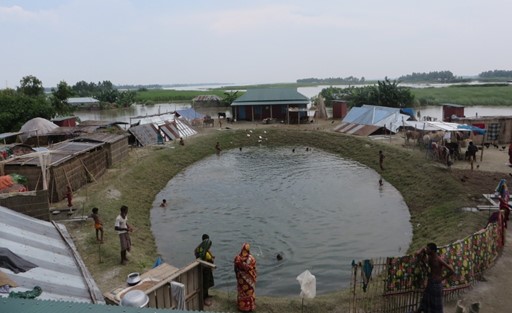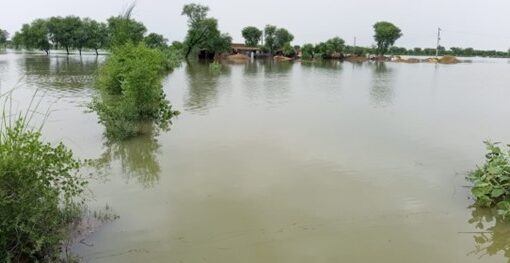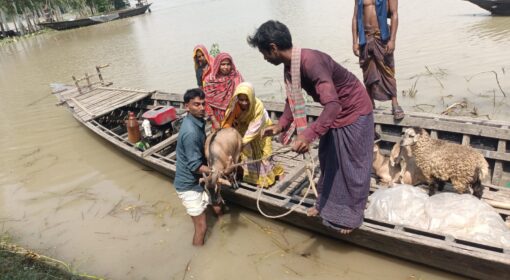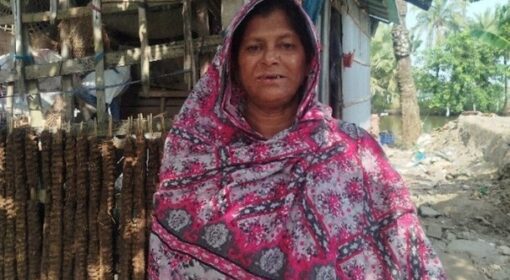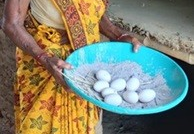Jannatul Naim, Shaira Rahman (Friendship NGO)
This blog is part of a dossier on locally-led adaptation, featuring insights and lessons from the Reversing the Flow (RtF) program. RtF empowers communities in Bangladesh, Burkina Faso, Ethiopia, Kenya, and Sudan to build climate resilience through direct funding and a community-driven, landscape approach.
The river islands of the Brahmaputra, particularly in the Gaibandha and Kurigram districts of Bangladesh, are heavily impacted by climate change, experiencing increasing river erosion, flooding, and frequent cyclones. One effective adaptation measure in these regions is the construction of plinths- elevated clusters of villages designed to provide a safe refuge from rising floodwaters. These plinths are built on oval-shaped mounds, raised above known flood levels, and serve as a critical shelter during extreme weather events. Each plinth can permanently house 25 to 30 displaced families and accommodate up to 100 to 150 families, along with their livestock and personal belongings, during emergencies.
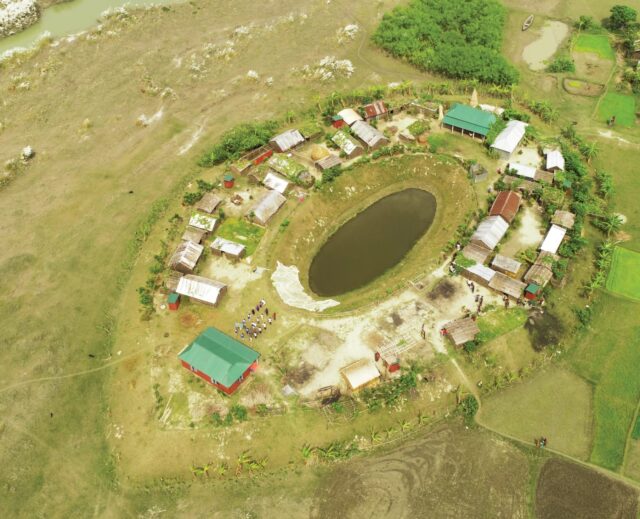
Every year, these plinths serve as designated flood shelters for local communities, with a pre-selected list of families that will take refuge during floods. In these plinths, an average of 25 pre-selected landless, marginalized families take permanent shelter. However, during emergencies, around 150 flood-affected households can temporarily seek shelter, depending on the situation. This proactive, community-driven approach allows families to make quick decisions on where to seek safety during disasters. The plinths are equipped with essential facilities such as safe drinking water, latrines designed to be accessible to individuals with disabilities, and sloped infrastructure to accommodate people and livestock. In addition, the plinth clusters often include a community center, which can be used for meetings or as an emergency shelter, as well as schools to serve the local population.
The Friendship Disaster Management Committee (FDMC) was established within the community after conducting open consultations with the relevant community people includes marginal people as a part of community. These FDMC community groups assess disaster-prone areas within their region and identify the most vulnerable families. They also facilitate discussions and coordinate with donors to secure land donations for plinth raising, aimed at rehabilitating landless families and providing temporary shelters during emergencies. Additionally, the FDMC selects its own leadership to engage in policy dialogue and maintain communication with local government authorities and other organizations.
The process for selecting families is initiated through community discussions involving local leaders, government representatives (Union Parishad members), and disaster-affected individuals, especially those without stable incomes. The realization of each plinth is a cooperative effort, requiring the donation of land from landowners, as well as permission and support from the government and other stakeholders.
The oval shape and reinforced front edge of the plinths have proven effective in withstanding the force of floodwaters, offering a more sustainable and long-lasting solution compared to the weaker plinths previously used by locals. This design improves resilience and reduces damage from floods. Furthermore, plinth construction incorporates local resource mobilization and nature-based solutions, such as using sand from local river dredging to fortify the structures.
Friendship NGO, an organization involved in this effort, introduced Community-Initiated Disaster Risk Reduction (CIDRR), a comprehensive approach to managing multiple hazards. This method empowers communities to identify and analyse potential hazards, assess risks, and develop strategies for disaster preparedness and response. Through CIDRR, communities are better equipped to rehabilitate and protect themselves against future crises.
